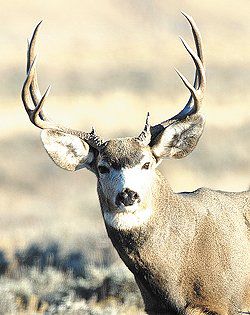Lousy weather and a shorter hunt during the 2010 deer season may have contributed to lower success, but the big factor on the minds of hunters and the Division of Wildlife Resources is that mule deer numbers are declining.
“The public wants the herd restored to historic levels,” stated DWR Southeast Region Manager Bill Bates in an interview Tuesday.
Furthermore, the message DWR has gotten is that hunters will tolerate restrictions in order to bring the herd back.
Bates said that the Wildlife Board has taken a long look at the situation and has come up with a plan to regulate next year’s hunt unit-by-unit across 29 districts in the state.
Hunters will get a chance to learn about those changes – and other efforts the DWR is conducting to restore the herd – during an informal public information session at the CEU Jennifer Leavitt Student Center Feb. 16 from 7-9 p.m.
Bates said the division plans to set up nine booths to showcase what has been done so far and what is planned for deer management.
DWR also wants to listen as well as talk, he added, so people should feel free to express their ideas and concerns as they visit.
The division has already launched what it bills as the most massive initiative in Utah history, and probably in the west.
For instance, the DWR and its partners have already improved mule deer habitat on about 600,000 acres at a cost of more than $70 million. Plans call for enhancement of another 500,000 acres during the next five years.
Coyotes, which prey on fawns, have been targeted in areas important to deer populations. DWR has given $3 million to the USDA Wildlife Services, which last year killed 1,700 of the predators.
The Utah Department of Transportation has also been involved in the effort to reduce the number of deer wiped out on the state’s highways. The tab for fencing and highway bypass structures has exceeded $45 million to date. DWR is also funding two studies by Utah State University to find out the most effective bypass structures and to determine just how many deer and elk are killed on state highways each year.
The effort to stop poachers has been intensified, as has research into diseases such as chronic wasting disease. The division has spent about $1 mllion on this research during the past five years.
DWR invites all to meeting for input on deer management

"The DWR invites interested parties to weigh in on deer management."
